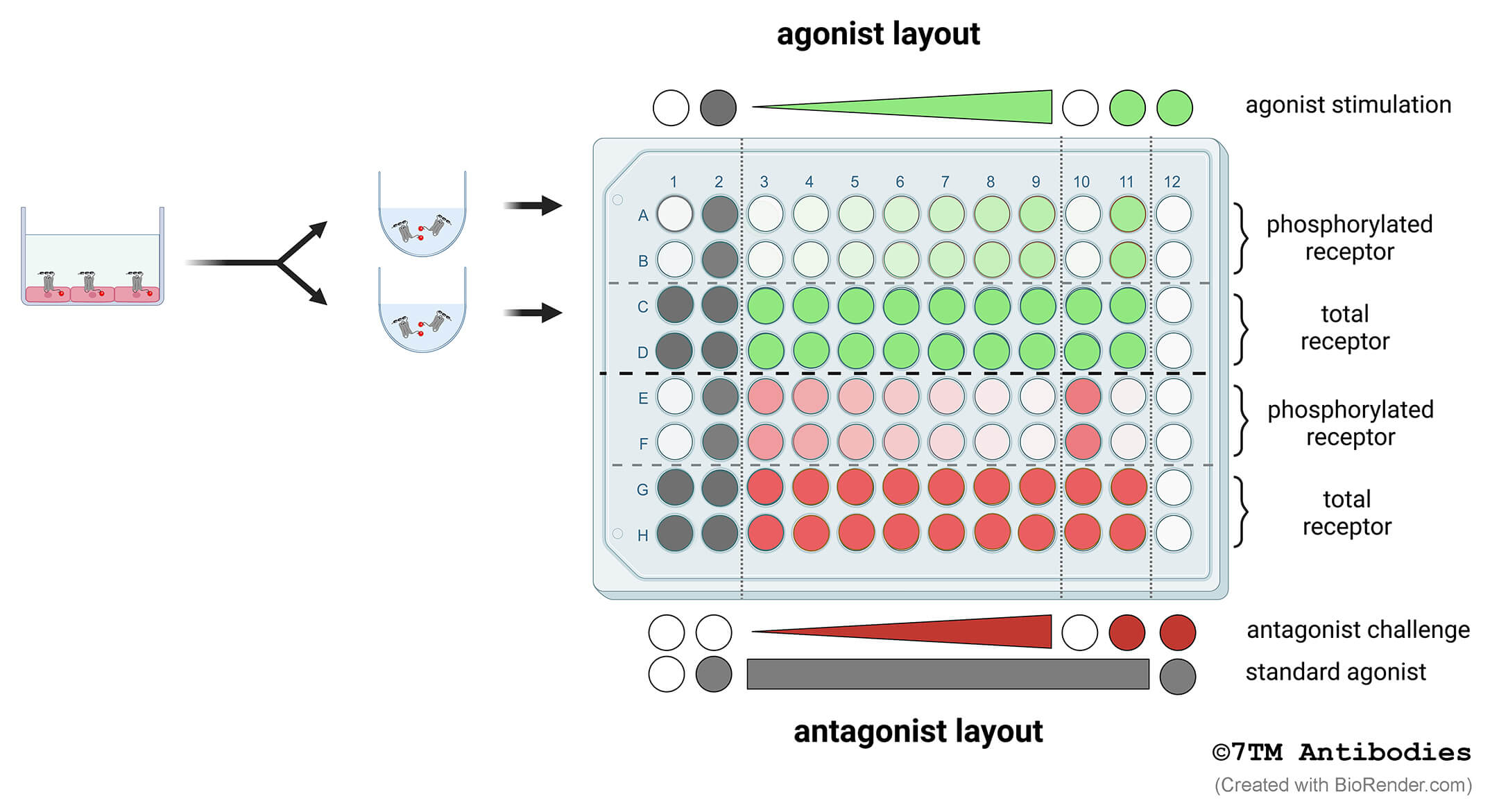No results were found for the filter!
30
NEW
 pT307/pS309-M2 Phosphorylation Assay Kit
pT307/pS309-M2 Phosphorylation Assay Kit The pT307/pS309-M2 Phosphorylation Assay Kit allows determination of M2 Phosphorylation in 96-well plates without the need for Western blot analysis.
$ 420.00 * $ 600.00 *
30
NEW
 pS327/pS328-MRGPRX2 Phosphorylation Assay Kit
pS327/pS328-MRGPRX2 Phosphorylation Assay Kit The pS327/pS328-MRGPRX2 Phosphorylation Assay Kit allows determination of MRGPRX2 Phosphorylation in 96-well plates without the need for Western blot analysis.
$ 420.00 * $ 600.00 *
30
NEW
 pT356/pT357-NK1 Phosphorylation Assay Kit
pT356/pT357-NK1 Phosphorylation Assay Kit The pT356/pT357-NK1 Phosphorylation Assay Kit allows determination of NK1 Phosphorylation in 96-well plates without the need for Western blot analysis.
$ 420.00 * $ 600.00 *
30
NEW
 pS338/pT339-NK1 Phosphorylation Assay Kit
pS338/pT339-NK1 Phosphorylation Assay Kit The pS338/pT339-NK1 Phosphorylation Assay Kit allows determination of NK1 Phosphorylation in 96-well plates without the need for Western blot analysis.
$ 420.00 * $ 600.00 *
30
NEW
 pT344/pS347-NK1 Phosphorylation Assay Kit
pT344/pS347-NK1 Phosphorylation Assay Kit The pT344/pS347-NK1 Phosphorylation Assay Kit allows determination of NK1 Phosphorylation in 96-well plates without the need for Western blot analysis.
$ 420.00 * $ 600.00 *
30
NEW
 pS355/pS356-β2 Phosphorylation Assay Kit
pS355/pS356-β2 Phosphorylation Assay Kit The pS355/pS356-β2 Phosphorylation Assay Kit allows determination of ß2 Phosphorylation in 96-well plates without the need for Western blot analysis.
$ 420.00 * $ 600.00 *
30
NEW
 pT360/pS364-β2 Phosphorylation Assay Kit
pT360/pS364-β2 Phosphorylation Assay Kit The pS355/pS356-β2 Phosphorylation Assay Kit allows determination of ß2 Phosphorylation in 96-well plates without the need for Western blot analysis.
$ 420.00 * $ 600.00 *
30
NEW
 pT372/pS373-EP3 Phosphorylation Assay Kit
pT372/pS373-EP3 Phosphorylation Assay Kit The pS351/pS353-S1P1 Phosphorylation Assay Kit allows determination of S1P1 Phosphorylation in 96-well plates without the need for Western blot analysis.
$ 420.00 * $ 600.00 *
30
NEW
 pS351/pS353-S1P1 Phosphorylation Assay Kit
pS351/pS353-S1P1 Phosphorylation Assay Kit The pS351/pS353-S1P1 Phosphorylation Assay Kit allows determination of S1P1 Phosphorylation in 96-well plates without the need for Western blot analysis.
$ 420.00 * $ 600.00 *
30
NEW
 pS358/pS359-S1P1 Phosphorylation Assay Kit
pS358/pS359-S1P1 Phosphorylation Assay Kit The pS358/pS359-S1P1 Phosphorylation Assay Kit allows determination of S1P1 Phosphorylation in 96-well plates without the need for Western blot analysis.
$ 420.00 * $ 600.00 *
30
NEW
 pS345-S1P5 Phosphorylation Assay Kit
pS345-S1P5 Phosphorylation Assay Kit The pS345-S1P5 Phosphorylation Assay Kit allows determination of S1P5 Phosphorylation in 96-well plates without the need for Western blot analysis.
$ 420.00 * $ 600.00 *
30
NEW
 pS338/pT339-FPR1 Phosphorylation Assay Kit
pS338/pT339-FPR1 Phosphorylation Assay Kit The pS338/pT339-FPR1 Phosphorylation Assay Kit allows determination of FPR1 Phosphorylation in 96-well plates without the need for Western blot analysis.
$ 420.00 * $ 600.00 *
30
NEW
 pS345/pS346-CMKLR1 Phosphorylation Assay Kit
pS345/pS346-CMKLR1 Phosphorylation Assay Kit The pS345/pS346-CMKLR1 Phosphorylation Assay Kit allows determination of CMKLR1 Phosphorylation in 96-well plates without the need for Western blot analysis.
$ 420.00 * $ 600.00 *
30
NEW
 pS362/pS363/pS364-V2 Phosphorylation Assay Kit
pS362/pS363/pS364-V2 Phosphorylation Assay Kit The pS362/pS363/pS364-V2 Phosphorylation Assay Kit allows determination of V2 Phosphorylation in 96-well plates without the need for Western blot analysis.
$ 420.00 * $ 600.00 *
30
NEW
 pS335/pS336-CB2 Phosphorylation Assay Kit
pS335/pS336-CB2 Phosphorylation Assay Kit The pS335/pS336-CB2 Phosphorylation Assay Kit allows determination of CB2 Phosphorylation in 96-well plates without the need for Western blot analysis.
$ 420.00 * $ 600.00 *
30
NEW
 pT338/pT340-CB2 Phosphorylation Assay Kit
pT338/pT340-CB2 Phosphorylation Assay Kit The pT338/pT340-CB2 Phosphorylation Assay Kit allows determination of CB2 Phosphorylation in 96-well plates without the need for Western blot analysis.
$ 420.00 * $ 600.00 *
Recently viewed



